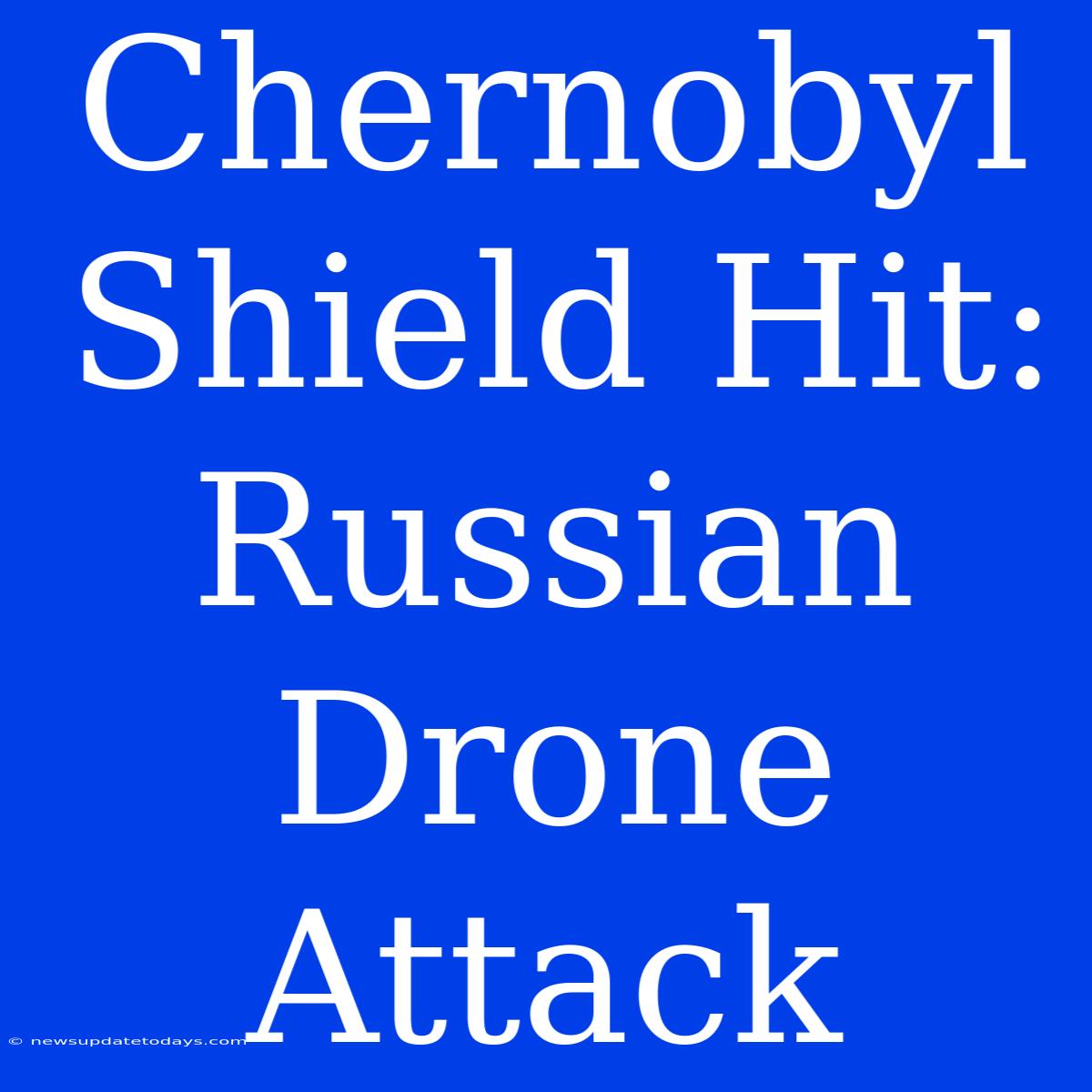Chernobyl Shield Hit: Russian Drone Attack – A Deep Dive into the Implications
The recent attack on the Chernobyl exclusion zone, specifically targeting the protective shield encasing the damaged reactor, has sent shockwaves across the globe. This brazen act, widely attributed to a Russian drone strike, raises serious concerns about environmental safety, nuclear security, and the ongoing ramifications of the war in Ukraine. This article delves into the details of the incident, its potential consequences, and the broader implications for international relations.
Understanding the Significance of the Chernobyl New Safe Confinement (NSC)
The Chernobyl New Safe Confinement (NSC), also known as the "Arch," is a massive structure built to encase the remains of Reactor 4, preventing further radioactive material release. Its damage, however minimal, represents a significant threat. The integrity of the NSC is paramount to containing the radioactive waste within the exclusion zone. Any compromise to its structural integrity could have far-reaching environmental and health consequences.
The Attack: Details and Speculation
While official details remain scarce and investigations are ongoing, reports suggest a Russian drone struck the area near the NSC. The exact nature of the damage and the intention behind the attack are still under scrutiny. Several theories are circulating:
- Accidental Targeting: The possibility of an accidental strike, due to poor intelligence or navigational errors, cannot be ruled out.
- Deliberate Sabotage: A more concerning possibility is that the attack was a deliberate act of sabotage, aimed at disrupting Ukrainian efforts to manage the site or creating further chaos.
- Distraction Tactic: Some analysts speculate that the attack could have been a diversionary tactic, aimed at drawing attention away from other military operations.
Regardless of the intent, the attack highlights the vulnerability of the Chernobyl site, even within the exclusion zone, and the potential for catastrophic consequences if security measures are compromised.
Potential Environmental and Health Consequences
The long-term consequences of even minor damage to the NSC are difficult to predict. The potential for radioactive material leakage, even on a small scale, is a serious concern. This could contaminate the surrounding environment, affecting soil, water, and wildlife, and potentially exposing nearby populations to harmful radiation. Furthermore, the potential for wider dissemination of radioactive particles through air currents is a worrying possibility.
International Response and Concerns
The international community has strongly condemned the attack, highlighting the reckless disregard for environmental safety and international norms. The incident raises serious concerns about the potential for future attacks on sensitive nuclear sites and the need for strengthened international cooperation to prevent such incidents. The IAEA (International Atomic Energy Agency) has called for an immediate investigation and has voiced concerns about the safety and security of the Chernobyl site.
Conclusion: A Wake-up Call
The attack on the Chernobyl protective shield serves as a stark reminder of the dangers of armed conflict and the potential for devastating environmental consequences. The long-term impacts of this incident are yet to be fully understood, but it underlines the critical need for enhanced security measures at Chernobyl and other sensitive nuclear facilities worldwide. This incident also underscores the urgency of finding a peaceful resolution to the conflict in Ukraine and preventing further escalation that could have catastrophic global ramifications. The world watches with bated breath, hoping for a swift and thorough investigation and a commitment to preventing such reckless acts from happening again.

